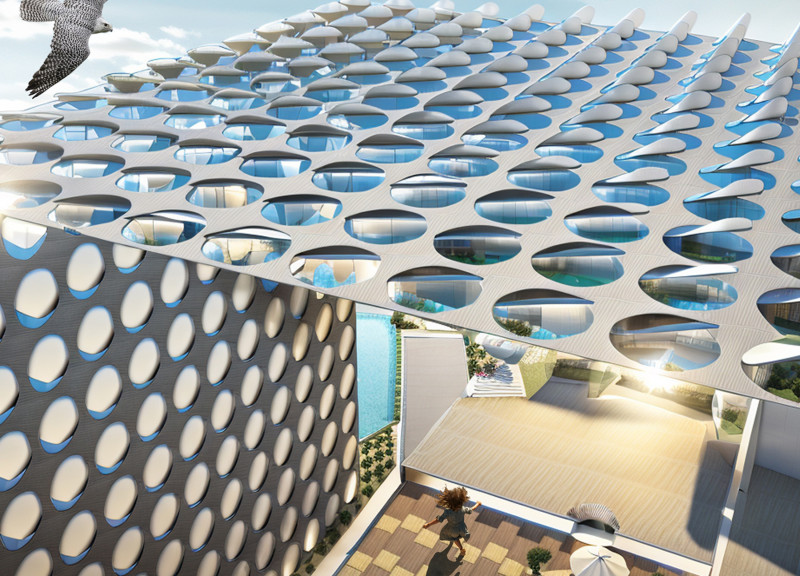5 key facts about this project
At the heart of the project is a design concept that emphasizes connectivity and openness. This notion is reflected in the spatial organization, where public and private areas are seamlessly integrated. The ground floor welcomes visitors with expansive glass facades, allowing natural light to permeate the interiors and fostering a sense of accessibility. The transparency of the architecture invites interaction from passersby, effectively bridging the gap between the building and its environment. The use of large openings not only enhances views but also reinforces the relationship between the indoor spaces and the outdoor landscape.
The project employs a variety of materials that contribute to both its visual appeal and functionality. Predominantly featuring concrete, glass, and timber, these materials work in tandem to establish a balance between warmth and modernity. The concrete elements provide structural integrity and durability, while the extensive use of glass creates an inviting atmosphere and enhances energy efficiency. Timber, often used in detailing, adds a tactile quality that softens the overall visual impact, creating a more human scale within the architectural design.
Unique design approaches are evident in several notable features throughout the project. For instance, the incorporation of green roofs and vertical gardens not only enhances the aesthetic value but also promotes environmental sustainability. These elements serve a dual purpose; they improve air quality and provide a habitat for local flora and fauna while contributing to the building's insulation. This attention to greenery reflects a broader trend in architecture towards integrating nature into urban environments, promoting biodiversity and well-being.
The layout of the building is strategically designed to maximize functionality. Circulation paths are clearly defined, with intuitive movement flows guiding users through various spaces. The arrangement of rooms and common areas facilitates both collaborative activities and private moments of reflection. Spaces are equipped with flexible furnishings that can be adapted for a variety of purposes, underscoring the project's commitment to versatility and user-oriented design.
In addition to its practical functions, the architecture represents an artistic expression that reflects the cultural identity of the location. Local materials and traditional building techniques have been honored in the design, creating a dialogue between the past and the present. This engagement not only pays homage to regional heritage but also fosters a sense of belonging within the community.
The overall impact of the project extends beyond its physical footprint. It aims to create a vibrant hub for social interaction, encouraging the exchange of ideas and promoting a sense of community. This architectural design goes beyond mere functionality to become a place where individuals can connect, collaborate, and thrive.
For further exploration of the project, readers are encouraged to delve into the detailed architectural plans, sections, and designs presented. A deeper understanding of the architectural ideas behind this project will provide additional insights into its thoughtful design and how it addresses the needs of its surroundings.


























